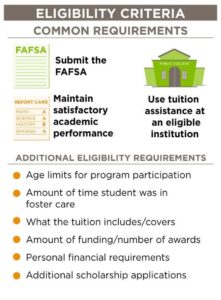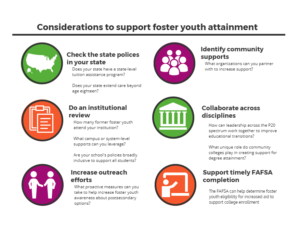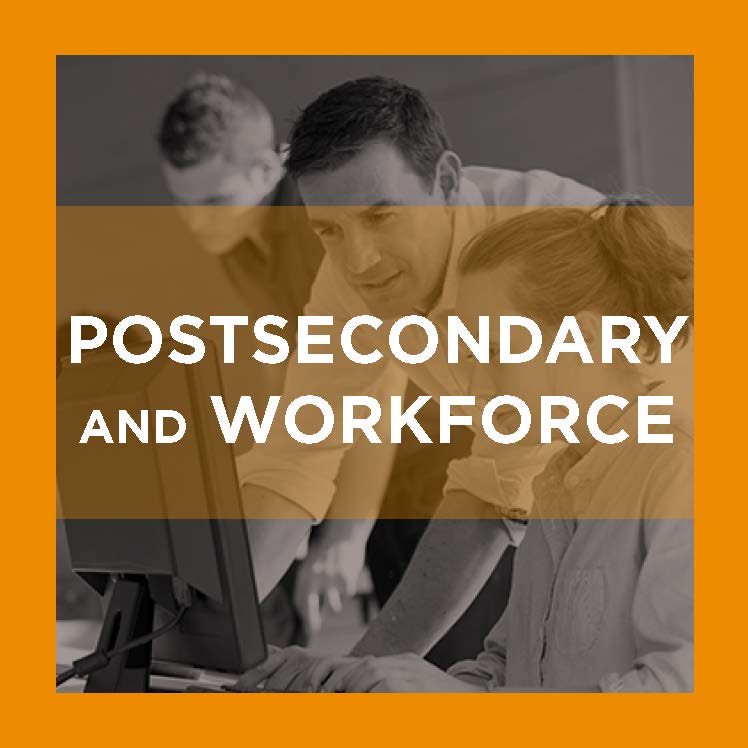This blog post originally appeared on the ACCT Now blog.
As a new academic year quickly approaches, it brings the hope of achievement and social mobility for many students. However, access is not equally available for all those seeking postsecondary degree attainment. Among the most vulnerable students are youth in the foster care system and foster care alumni. In 2015, there were more than 427,000 youth in foster care, a number that has been steadily increasing over the last decade. Despite the growing prevalence of youth in foster care, little is known about their educational pathways, thus dampening their likelihood for academic success in comparison to their peers. Research shows dismal expectations when it comes to degree attainment – only 46 percent will earn a high school or GED diploma, and less than three percent will obtain a bachelor’s degree.
For many youth, time in care means prolonged exposure to unhealthy environments, frequent residential and educational disruptions, and long-term disparities in resources for support services, all of which have the propensity to negatively impact access to education. Additionally, foster youth who do enroll in college continue to experience obstacles such as housing and food insecurity, lack of personal support, and financial cost, all while transitioning to an environment with the added stress of academic rigor. While foster youth are an often-overlooked population who can slip through the cracks between entangled policy initiatives and well-intentioned, but sometimes inconsistent streams of support, there have been efforts to support foster youth degree attainment through federal and state policy, institutional programming, and community organization advocacy.
Policy Responses
The history of federal policies designed to scaffold resources that directly or indirectly support foster youth educational attainment are often entangled or overlapping. A review of these policy initiatives shows that while many are federally funded, states are given the autonomy in administering the policies – sometimes inadvertently exacerbating an already complicated menu of financial aid policy options.
The most notable federal initiatives are the John H. Chafee Foster Care Independence Program (CFCIP) and the 2008 Fostering Connections to Success and Increasing Adoptions Act (FCA). These two policies fundamentally changed the landscape of the foster care system and increased efforts to encourage postsecondary enrollment and support. Chafee funds incentivize broad state support for foster youth regarding employment, financial and household stability, healthcare coverage, community support, education attainment, and personal development. The FCA further broadened this support by, among other policies, allowing states the opportunity to extend the age of foster care eligibility beyond 18. This provides students access to resources and support during the impactful transition between high school and college, increasing their chance of success. In addition to these federal-state partnerships, individual states continue to develop policy reforms that support the postsecondary attainment of foster youth.
Tuition Assistance for Foster Youth
State-based tuition assistance programs act as a form of stability aid, creating an additional layer of financial support not always met by larger national funding streams. This support can be integral in the postsecondary access and persistence for underrepresented student populations represented in all types of institutions. A recent report from Education Commission of the States finds that to date, 28states demonstrate a commitment to improving educational outcomes for foster youth with tuition assistance policies. These incentives help alleviate or remove many of the postsecondary financial barriers for foster youth, but the eligibility criteria greatly differ from state to state. See Figure 1: Eligibility Criteria for some common eligibility criteria found in tuition assistance programs.

Complex and exclusive eligibility criteria narrow the pool of foster youth applicants and can limit the reach of well-intentioned policies. At the institution level, programs continue to move the needle on foster youth access and persistence by offering outreach programs and support initiatives, but there is still work to do. Through thorough consideration of policy implication and a realignment of broader and more inclusive program design, state policymakers and education professionals can improve postsecondary pathways and attainment for this important population.

Author Bios:
Molly Sarubbi is a policy researcher with Education Commission of the States. Molly can be reached at msarubbi@ecs.org or 303.299.3606.
Emily Parker is a policy analyst with Education Commission of the States. Emily can be reached at eparker@ecs.org or 303.299.3662.











